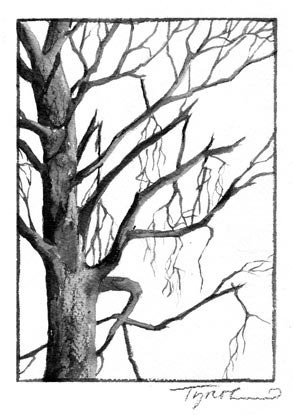
For many in New England, the grey days of March are among the sweetest of the year. March is when sugarmakers hike to their sugar maples, drill tap-holes into trees, hang buckets and await the welcome sound of trickling, translucent sap.
The sap flows when the trees begin to awaken from their deep winter slumber. Sugarmakers hope for above-freezing days and cold nights, which are the best conditions for sap flow.
Before you trudge out to the old sugar maples in the backyard, however, consider this: If your maples were significantly damaged by this winter’s ice storm, they may need to keep their coveted sap for themselves this year.
On Dec. 11 an ice storm did to portions of southern New Hampshire and Vermont what the three-day, historic ice storm did to northern New England, Southern Quebec and Upstate New York in January, 1998. As in ’98, many sugarmakers awoke on the morning of Dec. 12 to find thick coatings of ice on their tree limbs. In many cases the weight of the ice snapped branches and split trunks.
For some producers, the December storm ended this spring’s sugaring season before it could begin. In Temple, N.H., for example, Ben Fisk of Ben’s Sugar Shack reported a sugarbush full of splintered, unusable trees. Of the 4,500 taps Fisk usually operates, he expects to run just 500.
“The entire top half of the sugarbush was gone,” Fisk noted. “We’re going to have a real bad season this year.”
Fisk and others understand that tapping a maple stressed by limb-loss is likely to hinder the tree’s recovery. In some cases, sugar maples should be left undisturbed for years to rejuvenate.
Sugarmakers should carefully weigh the damage. In worst-case scenarios, trees will never recover, so harvesting them for logs or firewood may be in order. There’s hope, however, in the fact that trees can be remarkably resilient.
Commercial producers usually know the dangers of over tapping, but backyard sugarmakers may want to consider recent recommendations from the University of New Hampshire Cooperative Extension. In short, the Extension says:
If a sugar maple suffers from less than 10 percent crown loss, it is probably safe to tap this spring as normal. If between 11 and 25 percent of the crown has been lost, tap lightly by reducing the number and size of tap holes. For trees with a substantial crown loss—26 to 75 percent—the tree itself is at risk and should not be tapped this spring. If a crown loss exceeds 75 percent, the tree may never recover. In such cases, sugarmakers might consider tapping the severely damaged tree one last time this spring to access the starch reserves in the roots.
The Extension suggests that sugarmakers consult a forester if they are uncertain of the outlook for their trees.
Most sugar maples will eventually recover from the loss of major limbs through a process known as ‘compartmentalization,’ whereby the tree grows a barrier that walls off the wounded area and prevents decay from spreading to new wood. In the process certain chemicals—resins and terpenes—are mobilized to fight harmful bacteria and fungi. Compartmentalization, which can take years to complete, protects the tree just as a scab seals off a human wound.
Sugarmakers can do little more than watch and wait for this process to work. Experts say store-bought tree paints or other products are not as successful as the tree’s natural defenses, because they do not keep out every bacterium and fungal spore, and it only takes one to infect the tree. Cutting a limb back to the trunk, however, may allow the tree to grow over the injury more quickly.
Trees with more than 50 percent crown damage face an uphill challenge. Those damaged that extensively in the ’98 ice storm suffered a 50 percent growth reduction for the first five years, according to a study by the U.S. Department of Agriculture. The greater the crown loss, the longer it took the maples to close any wounds, including small ones made by taps, according to the study.
Despite the setbacks, sugarmakers who were spared the worst of the ice damage are cautiously optimistic about the upcoming sugaring season. This winter’s snowy groundcover may contribute to a productive season for some sugarmakers, because deep snow insulates tree roots that are close to the surface; there’s also anecdotal evidence that cold winter weather helps preserve a tree’s starch reserves. Of course, that snow can make it difficult for some farmers to reach their trees.

